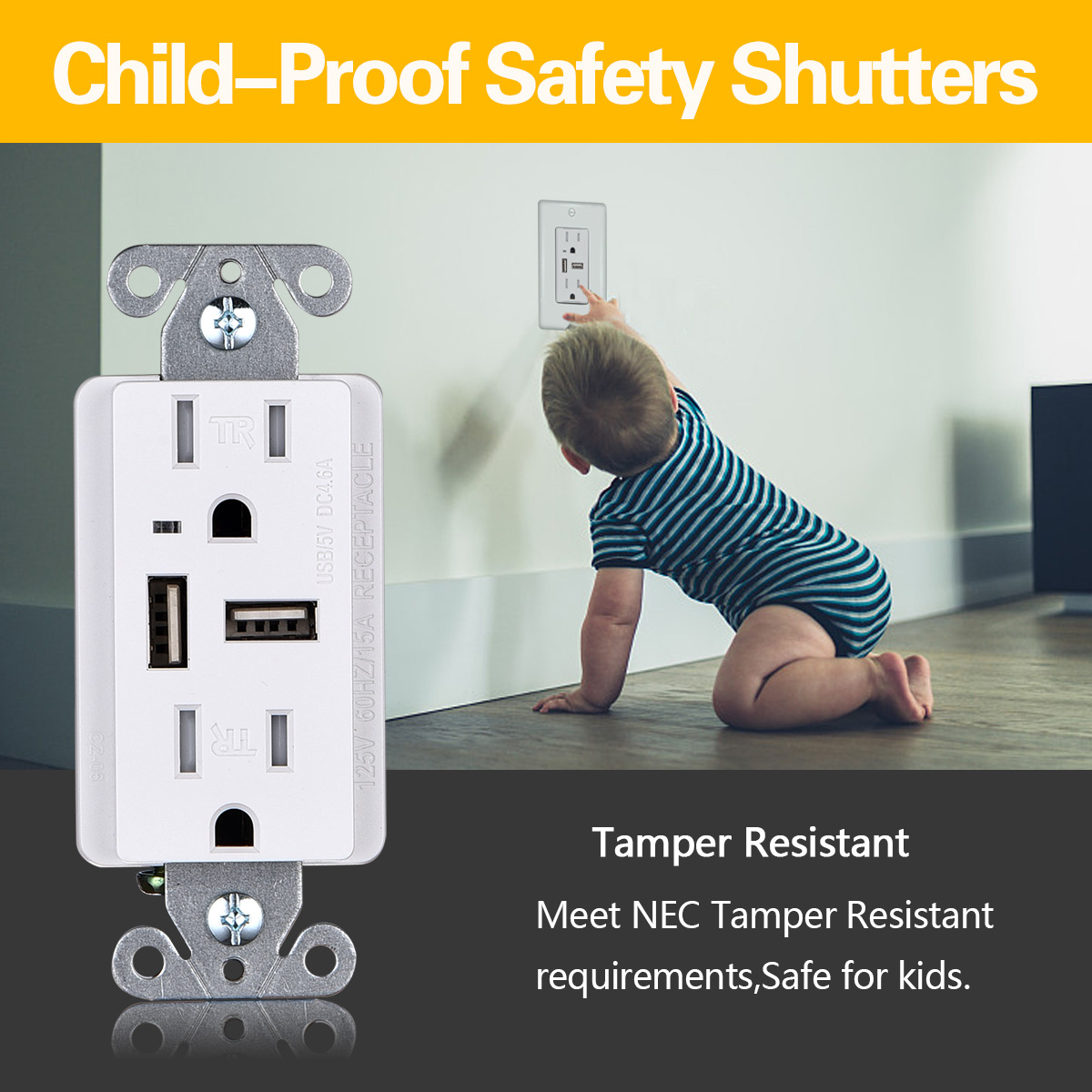Tips for Selecting USB Wall Outlets
Now that you’ve decided to upgrade to USB outlets in specific areas of your home, here are some guidelines to keep in mind when you head to your local hardware store to make your purchase:
1. **High Quality**
**Avoid uncertified products.** All electrical wall outlets, including USB ones, should be both UL certified and compliant with the NEC code.
**Opt for Original Equipment Manufacturer (OEM) products.** In essence, this means purchasing equipment designed for use with your specific device. OEM products can also offer an added layer of protection against surges while your device is charging.
2. **USB Outlet Designs**
USB receptacles generally come in two main designs: those that combine 120-volt outlets with two or more USB ports, and those with multiple USB ports only. Consider USB-only receptacles for a home office setup near a standard outlet, while combo USB outlets are more convenient for overnight charging in bedrooms.
3. **Protective Features**
Look for USB outlets with sliding shutters that can cover the USB ports to prevent the entry of pet hair, dirt, and dust. Some covers are even designed to activate a switch when opened, providing power to the USB outlet.
**Consider outlets with on-off switches** for areas in your home where they won’t be frequently used. Turning off power to the outlet when it’s not in use can help save energy.
4. **Ample Charging Capacity**
Amperage is crucial, especially for newer devices; higher amperage translates to faster charging. Note that “amperage” refers to the strength of an electric current, measured in amperes (or amps).
Most USB outlets have two ports with different amperage ratings. The port with 2.1 or 2.4 amps can charge newer devices more quickly, while the other port usually offers 1 amp, ideal for overnight charging and older devices.
Be aware of USB-C, a new port standard used in many modern devices. It supports the faster USB 3.1 specification, so consider purchasing a USB receptacle with ports for both the older standard (USB-A) and USB-C to future-proof your setup.
USB-A supports up to 2.4 amps (12 watts), while USB-C supports 3 amps (15 watts), offering room for growth as bandwidth increases. Most receptacles with multiple USB ports will have a maximum charging capacity of 5 amps, so think about upgrading multiple outlets to USB if you need to charge multiple tablets and phones simultaneously.
5. **Cool USB Gadgets**
If you spend a lot of time in the kitchen, explore options like the Kitchen Power Grommet, especially during a redesign. While they may not be cheap, it’s ideal to install one when you’re putting in new countertops. This spill-proof gadget conveniently pops up when you need to power an appliance or charge a device and disappears when not in use.
If you’d rather not have tech devices cluttering your kitchen, consider a Rev-A-Shelf Charging Drawer when updating your cabinetry. It discreetly houses two electrical outlets, two USB charging ports, and power cords at the back of the drawer.
For those working from home, you can apply a similar solution to your desk in the kitchen. Simply search online for Desk Power Grommets.
If you’re looking to incorporate smart features, search for a Smart WiFi Wall Outlet Receptacle online. These outlets come with in-wall charger outlets, USB ports, and support for voice assistants like Alexa and Google Assistant.
Prefer to avoid electricians or DIY electrical work altogether? Swap out a three-prong faceplate for one with a USB side outlet. Faith electric offer easy-to-install USB charger electrical plates for this purpose.
Post time: Oct-07-2023


